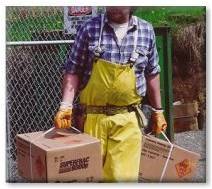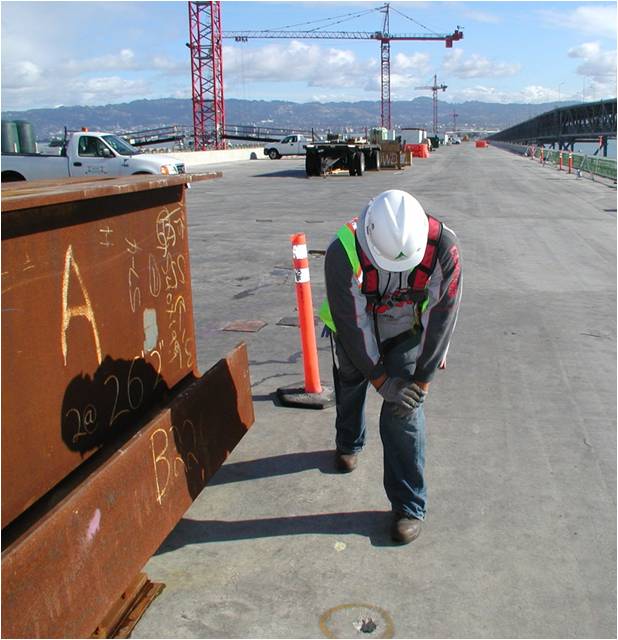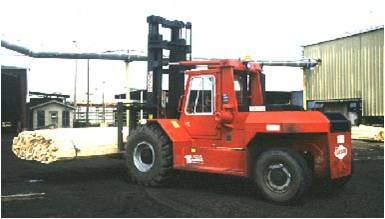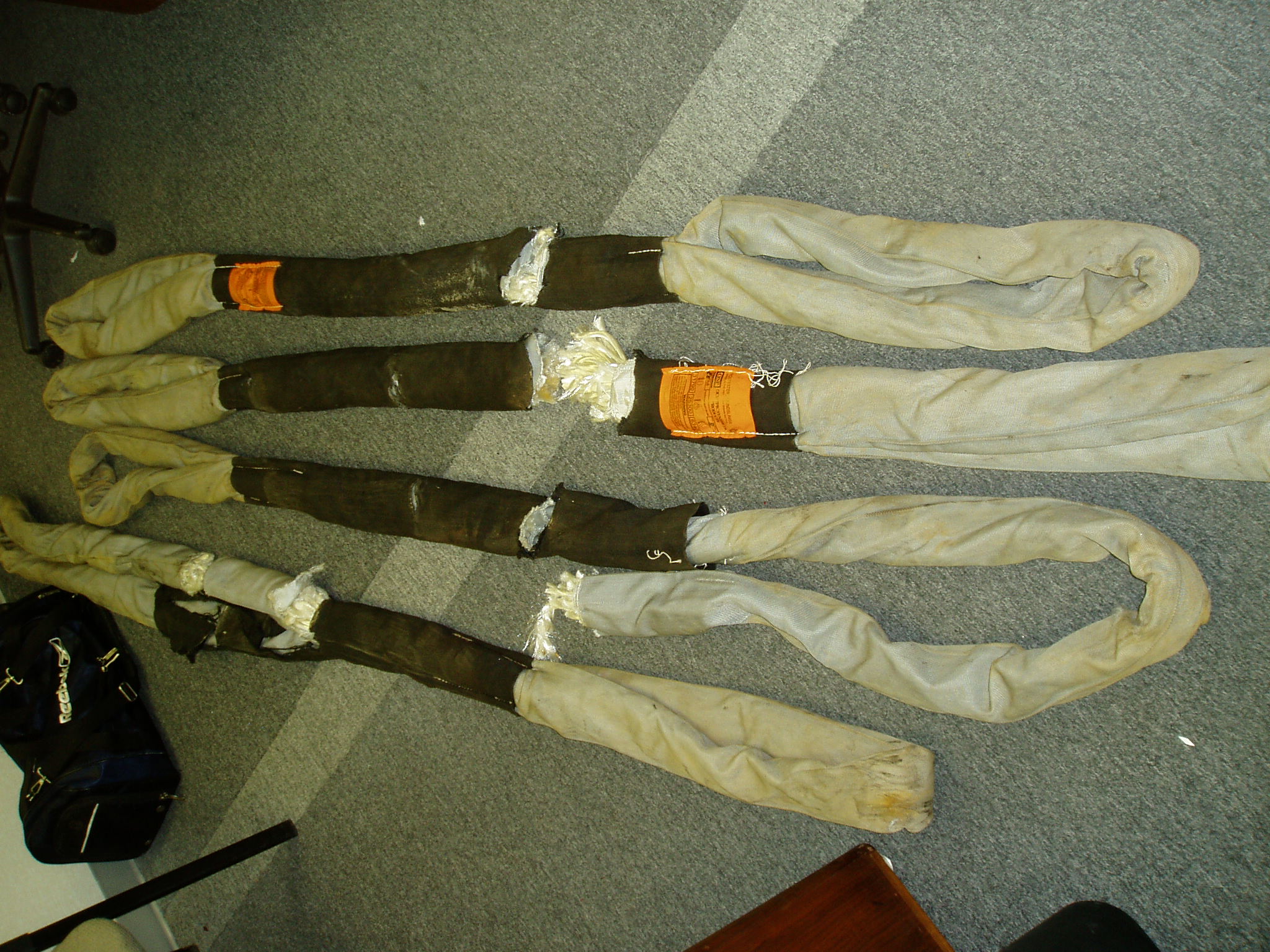Safety Standards For Construction Material Handling Quiz

Do you understand the safety standards for construction material handling? Take this quiz to see how much aware you are of material handling. This quiz is designed to test employees on their understanding of safety and material handling. You can test your knowledge as well as learn new things if you miss out on something. All the best! If you are into this profession, the quiz will be much easier for you. Try it out! All the best!
- 1.
What is covered under material handling?
- A.
Lifting
- B.
Loading
- C.
Packing/ Unpacking
- D.
Storage
- E.
All of the above
Correct Answer
E. All of the aboveExplanation
Material handling refers to the movement, control, and storage of materials within a facility or warehouse. It encompasses various activities such as lifting, loading, packing/unpacking, and storage. These activities are essential for the efficient and safe handling of materials throughout the supply chain. Therefore, the correct answer is "All of the above" as all the mentioned activities fall under the scope of material handling.Rate this question:
-
- 2.
Scenario: A load is light enough to lift alone, and you can lift it without straining. You feel you can get it to the destination, but it is very hard to see around the load. You should:
- A.
Leave the load and do something else
- B.
Ask for help with lifting the load
- C.
Carry it by yourself to get it done
- D.
None of the above
Correct Answer
B. Ask for help with lifting the loadExplanation
In this scenario, although the load is light enough to lift alone, the difficulty in seeing around the load poses a potential safety risk. Asking for help with lifting the load is the best option as it ensures that someone else can assist in navigating the surroundings while you carry the load. This reduces the risk of accidents or injuries that may occur due to limited visibility.Rate this question:
-
- 3.
When should gloves be used while lifting?
- A.
When the job site safety plan requires
- B.
When the material is heated or cooled
- C.
When the material has sharp edges
- D.
All of the above
- E.
Gloves are never required!
Correct Answer
D. All of the aboveExplanation
Gloves should be used while lifting in various situations. Firstly, when the job site safety plan requires it, indicating that wearing gloves is necessary for overall safety. Secondly, gloves should be used when the material being lifted is heated or cooled, as it can protect the hands from extreme temperatures. Lastly, gloves should be worn when the material has sharp edges to prevent cuts or injuries. Therefore, the correct answer is "All of the above."Rate this question:
-
- 4.
What is the purpose of ergonomics?
- A.
Another way to keep you busy
- B.
A way to make work less comfortable
- C.
Designing a task to fit the worker
- D.
A way to improve productivity
- E.
Both C and D
Correct Answer
E. Both C and DExplanation
The purpose of ergonomics is to design a task to fit the worker, ensuring that the work environment and equipment are optimized for the comfort and efficiency of the worker. This results in improved productivity and reduces the risk of discomfort or injury. Therefore, the correct answer is both option C (Designing a task to fit the worker) and option D (A way to improve productivity).Rate this question:
-
- 5.
How can stretching help with working and lifting?
- A.
Relaxes tendons and joints for added mobility
- B.
Prevents strain from quick movements
- C.
Increases overall health of an employee
- D.
All of the Above
- E.
None of the Above
Correct Answer
D. All of the AboveExplanation
Stretching can help with working and lifting in multiple ways. Firstly, it relaxes tendons and joints, which improves mobility and flexibility, making it easier to perform tasks that require movement and lifting. Secondly, stretching prevents strain from quick movements by preparing the muscles and joints for the physical exertion, reducing the risk of injury. Lastly, regular stretching increases overall health, including improved blood circulation and reduced muscle tension, which can positively impact an employee's ability to work and lift. Therefore, the correct answer is "All of the Above."Rate this question:
-
- 6.
What can be done to protect against Hand/Arm vibrations?
- A.
Wear Gloves
- B.
Rotate Crew Members
- C.
Periodic Breaks
- D.
Proper training on tool use
- E.
Nothing, you have to live with it.
Correct Answer(s)
A. Wear Gloves
B. Rotate Crew Members
C. Periodic Breaks
D. Proper training on tool useExplanation
To protect against hand/arm vibrations, several measures can be taken. Wearing gloves can provide cushioning and reduce the impact of vibrations on the hands. Rotating crew members allows individuals to alternate tasks, reducing prolonged exposure to vibrations. Taking periodic breaks gives the hands and arms time to rest and recover. Proper training on tool use ensures that tools are used correctly, minimizing the risk of excessive vibrations. Therefore, a combination of wearing gloves, rotating crew members, taking periodic breaks, and receiving proper training on tool use can help protect against hand/arm vibrations.Rate this question:
-
- 7.
If your load isn’t too heavy, twisting while lifting can’t harm you.
- A.
True
- B.
False
Correct Answer
B. FalseExplanation
Twisting while lifting can actually harm you, regardless of the load's weight. Twisting puts excessive strain on your spine and can lead to injuries such as muscle strains, herniated discs, or even more serious spinal damage. It is important to maintain proper lifting techniques, which include keeping your back straight and avoiding twisting motions, to prevent these injuries.Rate this question:
-
- 8.
Where should loads be located on forklifts?
- A.
On the edge of the forks to increase speed
- B.
On the middle of forks for added balance
- C.
As close to the mast as possible to prevent tipping
Correct Answer
C. As close to the mast as possible to prevent tippingExplanation
Loads should be located as close to the mast as possible on forklifts to prevent tipping. Placing the load near the mast helps to distribute the weight evenly and maintain stability. This positioning reduces the risk of the forklift becoming unbalanced and tipping over, ensuring the safety of both the operator and the surrounding environment.Rate this question:
-
- 9.
How often should rigging be inspected?
- A.
Quarterly
- B.
Monthly
- C.
Before each use
- D.
Weekly
Correct Answer
C. Before each useExplanation
Rigging should be inspected before each use to ensure safety and prevent accidents. Regular inspections help identify any potential issues or damage that may have occurred since the last use. This proactive approach allows for timely repairs or replacements, reducing the risk of equipment failure during operation. By inspecting before each use, any potential hazards can be identified and addressed promptly, ensuring the safety of both workers and the equipment.Rate this question:
-
- 10.
Should this sling be used for lifting?
- A.
Yes, it's fine.
- B.
Maybe, if the load isn't too heavy.
- C.
No, use a different one.
Correct Answer
C. No, use a different one.Explanation
The answer "No, use a different one" suggests that the sling being referred to is not suitable for lifting. This implies that there may be some issues or limitations with the sling that make it unsuitable for the task at hand. It is recommended to find an alternative sling that is more appropriate for lifting purposes.Rate this question:
-
- 11.
Does the Pacific Structures District allow chain rigging for general use?
- A.
Yes
- B.
No
Correct Answer
B. NoExplanation
The answer is "No" because the Pacific Structures District does not allow chain rigging for general use. This implies that there are specific regulations or restrictions in place that prohibit the use of chain rigging in this district.Rate this question:
-
- 12.
This is a storage cabinet for flammables. What isn't in compliance?
- A.
Everything looks fine
- B.
There are cardboard boxes.
- C.
Materials are too close to one another.
- D.
There are empty canisters.
Correct Answer
B. There are cardboard boxes.Explanation
The storage cabinet for flammables is not in compliance because there are cardboard boxes present. Cardboard is a highly flammable material and should not be stored in a cabinet specifically designed for flammables.Rate this question:
-
- 13.
Synthetic slings cannot be used for general hoisting purposes. Synthetic slings can only be used if wire rope slings are not suitable for a unique hoisting condition. If synthetic slings are used for hoisting, then the following procedure shall be followed. (Pick all that apply)
- A.
Specific Job Hazard Analysis for the lift
- B.
A detailed rigging plan with sketches and details outlined in our Synthetic Sling Guidelines
- C.
A designated knowledgeable rigger
- D.
A reason why wire rope cannot be used
- E.
Job Supt. approval
- F.
All of the above
Correct Answer
F. All of the aboveExplanation
The correct answer is "All of the above" because according to the given information, if synthetic slings are used for hoisting, all of the mentioned procedures should be followed. This includes conducting a specific job hazard analysis, creating a detailed rigging plan, having a designated knowledgeable rigger, providing a reason why wire rope cannot be used, and obtaining job superintendent approval.Rate this question:
-
- 14.
What does the Lifting Index value of 1.0 or less indicates?
- A.
The task of lifting is safe for all employees.
- B.
The task of lifting should not be attempted.
- C.
The task of lifting is a nominal risk to healthy employees.
- D.
The task of lifting is high risk for some fraction of the population.
Correct Answer
C. The task of lifting is a nominal risk to healthy employees.Explanation
A Lifting Index value of 1.0 or less indicates that the task of lifting is a nominal risk to healthy employees. This means that the lifting task can be safely performed by all employees without significant risk of injury or harm.Rate this question:
-
- 15.
Which is the common hazard involved in crane and hoist operations?
- A.
Electrical hazard
- B.
Physical hazard
- C.
Chemical hazard
- D.
Safety hazard
Correct Answer
A. Electrical hazardExplanation
An electrical hazard is a common risk in crane and hoist operations. These machines rely on electrical power for their operation, and any malfunction or electrical issue can pose a significant danger to the operators and those in the vicinity. Electrical hazards can include electrocution, electrical fires, and equipment damage. It is crucial to ensure that proper electrical safety measures are in place, such as regular inspections, proper grounding, and training for operators to prevent accidents and injuries.Rate this question:
-
Quiz Review Timeline +
Our quizzes are rigorously reviewed, monitored and continuously updated by our expert board to maintain accuracy, relevance, and timeliness.
-
Current Version
-
Nov 23, 2023Quiz Edited by
ProProfs Editorial Team -
Dec 22, 2008Quiz Created by
Kiewitsafe
 Back to top
Back to top









